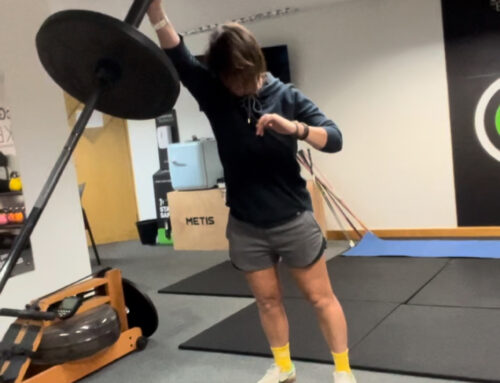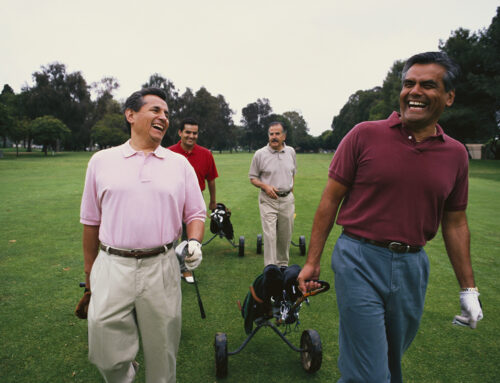
You’re never too old to improve your golf!
You’re never too old to improve your golf!
By Rachael Tibbs | August 8, 2022
Golf performance declines through ageing, however, it’s not just due to a reduction in muscle efficiency but it’s due to the breakdown of the whole kinetic chain. This basically means the way our whole body works together in unison from head to toe, including the mobility of joints, segmental stability, balance, speed, and strength.
The loss of mobility in a joint can lead to muscle tightness and inflexibility. This potentially can then lead to a change in correct movement patterns whereby muscles that should act as mobilisers become tight and stable, and muscles that should act as stabilisers become loose and lengthen. This then leads to improper movement patterns, dysfunction and then ultimately compensation which can potentially lead to pain and injuries.
A great example of this would be a reduction in hip mobility which is commonly a degenerative joint which affects many golfers over the age of 50. When the hip is restricted this can lead to a weakening of the gluteal muscles as it is not correctly utilising them. This can then lead to the lower back compensating for the lack of glute use, which consequently leads to lower back pain and stiffness.

This will have major implications for the golf swing. Pain aside, it can affect rotation both on your backswing and downswing, which can result in a lateral sway or slide which will inevitably impact your ball striking, consistency and ball flight.
All poor movement patterns and dysfunction will almost always be a detriment to your golf swing as it will impact consistency, sequencing, and efficiency.
Golf exercises for seniors: Increase your distance
Fear not because there is a way to be proactive, prevent the effects of aging on the body, and enable you to improve your game with golf exercises for seniors. If you feel that you have already passed that point there is also a way to reverse these dysfunctions and that is primarily through improving your current movement patterns through corrective and strength exercises.
Corrective exercises can be prescribed to address areas that lack mobility, improve stability and assist with motor firing patterns, thus restoring the correct alternating movement patterns that are associated with a functional body.
Strength exercises will create more stability at a joint, promote muscle growth, increase bone density and help to recruit more motor units, which ultimately means the muscle will contract more and create more force.
With a functional body comes a more efficient golf swing which yields more consistency, better scores and many more years playing better golf. Once functionality is restored then we can address balance, power and strength.
Great examples of successful golfers over the age of 50 include Bernhard Langer, who is still winning senior majors in his 60s. Langer follows a strict fitness regime and prioritises his fitness as this impacts his golf performance.
You’re never too old to improve your game and golf exercises for seniors are designed to help you do just that. Golfers are no longer being written off at 55 and are continuing to play at a good standard well into their 60s due to undertaking golf specific fitness programmes that help them maintain their mobility, stability, balance, and function.




